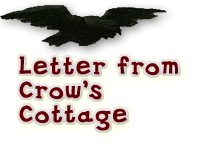


∞
Lanius collurio
Long Valley, Hong Kong
• 2 October 2013
Its prey firmly in claw, the Shrike roars in triumph before devouring the green caterpillar.
The perch is an electric power line strung above the rice paddies.
Photograph by Andrew Hardacre
By Andrew Hardacre
Posted from Hong Kong on 29 October 2013
What does the Shrike evoke? Back home in Britain, the Red-backed Shrike has all but disappeared as a breeding bird. Although the reasons for loss of this species as a British breeding bird are not fully understood, habitat loss is usually cited as a cause. In the shrike’s case it is suggested that egg collectors also may have played a significant role.
Seeing one here in Hong Kong, the nostalgia swells up. I've read a lot of books written over 100 years ago when birds like the shrike and the Cirl Bunting were widespread in England. W. H. Hudson is wonderful at reminding us what we have lost.
I get a frisson of excitement seeing a rare bird. But if I miss out, well.… There will always be another day. I am not a 'twitcher' in the true sense. Nevertheless, as a photographer the adrenaline rushes as I seek out the best angle for light and pose. Long lenses for detail, shorter ones for flight and action. I avoid the crowds and try to work alone or with one, maybe two pals. My mind is clear and unencumbered as I stalk my subjects. There is both therapy and catharsis in the act of walking the paths and bunds.
Shrikes are known as Butcher Birds for their habit of impaling prey on thorns. My Long Valley bird was not seen to do this, but it was photographed by one lucky individual taking a frog and very large centipedes as well as numerous caterpillars. It was a very handsome bird, widely appreciated and all the better for choosing such wonderful, open habitat.
According to the Oxford Book of British Bird Names, the name Red-backed Shrike was first mentioned by Pennant in 1776. In my meditations about the shrike and other creatures of the air, I sometimes feel I could be back in the 18th Century.
The word collurio — the Red-backed Shrike's binomial is Lanius collurio — can be found in texts written by Aristotle and Hesychius of Alexandria, but the word isn't tied to a specific bird species. However, informed conjecture links the ancient references to the shrike. It was evidently adopted as such. [Source: A Dictionary of Scientific Bird Names, James A. Jobling, Oxford University Press, 1991].
∞
The Butcher-bird bold, like his kinsman the Shrike,
With his bill was quite ready a death-blow to strike :
Fierce and dauntless the tribe, by their cruelty known;
The Tyrant infests not our temperate zone.
Order, Accipitres, (Linn.) Shrike, the Great, the Red-Backed, the Tyrant, the Butcher-Bird, Wood-chat, &c.
The genus Lanius, (Linn.) or Shrike, consists of more than one hundred and twenty species, scattered over the globe ; three, the Excubitor or Great Shrike, the Collurio or Lesser Butcher-bird, and the Rutilus or Wood-chat, found in this country.… The birds of this genus are noisy and quarrelsome; prey on smaller birds, tearing them in pieces, and sticking the fragments on thorns.
O R N I T H O L O G I A ,
Or
T H E B I R D S :
A Poem, In Two Parts ;
With
An Introduction To Their Natural History ;
And
Copious Notes
∞
James Jennings
1828 | London: Poole and Edwards, Stationers' Court | pp. 194-195

A Treasure amidst the Megalopolis
Dawn at Long Valley, Hong Kong
• 10 October 2013
The sun rises over the fields, casting its soft, warm, cashmere glow over the birth of another day.
The bird photographer is already on his treasure hunt.
Photograph by Andrew Hardacre
Long Valley — 塱原 — is an agricultural wetland of rice paddies and small family farms tucked between the Shek Sheung and Sheung Yue Rivers to the south of the Hong Kong megalopolis. The valley is a much-coveted green space over which battles have been fought — developers versus environmentalists, transportation interests versus green groups. The conservation lobby won a rare and major victory about ten years ago when it convinced government officials to prevent the Kowloon-Canton Railway from constructing a spur line through the heart of the valley.
Conserved and protected for the moment, Long Valley is one of the most popular sites in the territory for birdwatching and consistently turns up excellent records whilst also being a beautiful place in its own right.
I usually arrive at dawn. Even without birds, the valley provides great tranquility and relief from everyday life in the city. But the birds abound with over 200 species finding haven in the valley — most are resident to the area, although a good number of migrants and vagrants can be observed, adding wondrous variety to our eclectic and changing local flock.
The shrike featured here is probably the fifth record for Red-backed Shrike in Hong Kong. It was a confiding and popular bird. Our specimen wears juvenile plumage, making it a challenge to differentiate from the Brown Shrike, Lanius cristatus. The red back emerges as the bird matures.
When I photograph I am always trying to find a nice clean background. Aesthetically, the electric cables are unattractive, but they provide the power necessary for farmers to work the land. Long Valley is scattered with small shacks where the farmers keep their tools and perhaps some basic refreshments for the day. The shacks also provide shade for the farm dogs. Most farmers have dogs. Some are chained as they are highly territorial — not unlike photographers, who are sadly less frequently chained. Others lope around, snuffling and watchful as they chase an imaginary cat or intruder. So, the power cables are part of Long Valley.
Birders are cautioned always to stay on the paths and bunds, never to put at risk the crops the farmers tend so carefully. I always find the farmers cheerful and welcoming. Even limited Cantonese skills are appreciated.
∞
I keep but a man and a maid, ever ready to slander and steal ;
I know it, and smile a hard-set smile, like a stoic, or like
A wiser epicurean, and let the world have its way :
For nature is one with rapine, a harm no preacher can heal ;
The Mayfly is torn by the swallow, the sparrow spear'd by the shrike,
And the whole little wood where I sit is a world of plunder and prey.
— Baron Alfred Lord Tennyson, Maud; A Monodrama, IV. 4. | 1855


Shrike and Habitat
Shrike's Back • 2 October 2013
|
Rice Fields • 10 October 2013
The early morning light reveals the order and artistry of the agricultural patchwork.
The top image presents a sharp view of the juvenile shrike's backside,
which turns red as the bird matures.
Photographs by Andrew Hardacre
What you see at Long Valley depends on whether you open your eyes or not. Most visitors see the birds. Some see butterflies and dragonflies. Maybe even some snakes. I see harmony. Everything is basic, improvised, and time-tested… yet evolving. The crops and small areas of woodland are integrated into everyday life.
I arrive at dawn and the first farmers are already out, inspecting, tending, cultivating. Sometimes the grumbling noise of old machinery breaks the silence. Flocks of birds rise up from their roosts to start their morning forage. Egrets and herons flap languidly overhead. An occasional passing raptor can cause consternation amongst the smaller inhabitants.
The dogs are waking up. Would-be bullies, they strain at their chains if a human strays too close. The pups yelp a greeting. As they grow, they start to practice their growling, hoping for release from the frayed rope so they can play-nip an ankle or two.

A Rare and Recent Newcomer
The Fifth Record
• 2 October 2013
Photograph by Andrew Hardacre
As far as we can tell, this specimen
is the fifth Red-backed Shrike recorded in Hong Kong.
To Wai Yi captured the first record five years ago. She writes:
"In the evening of 6 October, 2008, I went to an open area in Ho Man Tin for birding as usual. The weather around that time was not good, with heavy rain beginning the previous day.… I had seen only an Asian Brown Flycatcher Muscicapa dauurica and was about to leave when a shrike Lanius flew out from the woodland where I was standing, about ten metres away.
"It looked different from a Brown Shrike L. cristatus, its flanks lacked the reddish colour, and its ear patch was not black; in fact it was the same colour brown as its head and upperparts. I thought it might be a Tiger Shrike L. tigrinus, so I took some photos and left. I posted the photographs on the HKBWS forum that evening … and the bird was identified from these by Paul Leader as a Red-backed Shrike L. collurio, the first record for Hong Kong. The shrike stayed for three days and was last seen on 9 October."
The Records Committee added this comment about the bird: "Its chosen location, a small wooded hill in the heart of urban Kowloon, was a reminder that migrant passerines can turn up almost anywhere.… Red-backed Shrike breeds from Europe west to Xinjiang Province, China. It is a long distance migrant and has been recorded as a vagrant to Japan, South Korea and Taiwan."
Hong Kong Bird Report 2007-08:
Red-backed Shrike First Paper, pp. 258-259
∞
A Vagrant on Contrary Winds
The Red-backed Shrike does not normally occur in Hong Kong. It is considered a vagrant and of course a rare bird for us. The first record was October 2008. The bird in the photos is only the fifth Red-backed Shrike recorded in Hong Kong.
Vagrancy is basically a commonplace term for birds turning up in places they shouldn't be. It is often described as "out of range". There are various possible reasons, including weather, especially high winds and storms. Birds get blown off course and simply land wherever they can to seek refuge and refuel. There are more complicated concepts such as reverse migration. (You'll find a link to a Wikipedia brief about the phenemenon in our links section at the end of this essay.)
What is interesting is how birds suddenly seem to change their patterns. I saw a Black-headed Bunting recently. Until 2009, according to our record keeper, Geoff Welch, it was a major rarity in Hong Kong. Suddenly it has started appearing regularly. Why? Nobody knows. Will it continue to visit? Or is the recent arrival of Buntings merely a fleeting anomoly? We shall have to wait and see.
I wonder, then: Shall the Red-backed Shrike become a regular visitor to Hong Kong? I hope so, but for the time being it remains a stray bird that landed in Long Valley and probably just fattened up and moved on. We also have a Happy Valley in Hong Kong, but that's part of the concrete jungle and is best known for being the site of the horse race course, where people go to lose money. Happy for whom? Hong Kong has a tendency to give places inappropriate names. I fervently hope that the Long in our valley’s name stands for longevity.
∞
A Vagrant in the Empire
Lanius collurio, Lin.
260bis.—Butler, Guzerat ; Stray Feathers, Vol. III, p. 463.
The European Red-backed Shrike.
Length, 7`5 ; wing, 3`5 ; tail, 3`5 ; tarsus, 0`96 ; bill at front, 0`56 ; bill from gape, 0`81.
. . . .
The European Red-backed Shrike was discovered by Major Butler in the neighbourhood of Deesa, during the latter part of the rains in September, 1874.
This is the only instance on record of the occurrence of the bird within the Indian Empire.
H A N D B O O K ,
To The
B I R D S
Of The
B O M B A Y P R E S I D E N C Y
∞
Lieut. H. Edwin Barnes, D.A.C.
1885 | Calcutta: Calcutta Central Press Co. | p. 145
A high-in-the-sky view of Long Valley
shows the convergence of the rivers Shek Sheung and Sheung Yue
with the valley tucked between the waters.
A click of the map will take you to the master aerial image at Google Maps.
Shrike Factoid: In the German language, the word for Red-backed Shrike is Neuntöter, or nine killer. This seems to come from a belief that the shrike kills nine birds a day.

The Pride of Youth
The Juvenile
• 2 October 2013
Photograph by Andrew Hardacre
"He launches into the air and dodges after a passing insect,
but often his flight is rapid and direct, with head held forward with determination ;
the prey when captured is carried to the perch, held with the foot and dismembered,"
writes T. A. Coward in Birds of the Wayside and Woodland
[ Frederick Warne & Co. | London & New York | 1895 | p. 105 ].
"Now and then an insect is lifted, parrot-like, to the bill,
or a beetle will be held and hammered on the ground ;
bees, wasps and other insects with lethal weapons
are smartly smashed into impotence.
Mice and small birds are suddenly dashed upon and struck down,
for in fair competition of speed either can evade him.…
Mice, lizards, small birds and large insects are, for convenience,
impaled upon a thorn or barbed wire before butchery ;
the spike is generally driven through the neck.
Where there is a convenient array of hooks the shambles become the 'larder.' "
Predator's Roar was posted on Tuesday, October 29, 2013
Largely retired, Andrew Hardacre is an enthusiastic photographer across a wide range of genres, from wildlife to street. He grew up in rural Britain but has traveled the 7 continents in search of birds and photographs. Now settled in rural Hong Kong, he continues to indulge his passion for books, wildlife and photography. Andrew is a Moderator of the Bird Photography community on Google+.
![]() Andrew Hardacre
Andrew Hardacre
You can reach Andrew by e-mail at 57andrew@gmail.com
![]() All downhill from here | Whatever comes to mind.......
All downhill from here | Whatever comes to mind.......
Andrew's blog showcases a wide range of his interests: photographs and commentary inspired by the natural world and the creatures who inhabit it. You'll also find some compelling character studies of our fellow humans.
![]() 57Andrew on flickr
57Andrew on flickr
OK, the editors here at Crow's Cottage are biased in Andrew's favor, but these images are special! If you study the gallery for a while, you'll find our Red-backed Shrike with caterpillar in beak amongst the flickr flock of beautiful birds. You'll also see world-class photographs of dragonflies, amphibians, insects, moths, dogs, and members of the human family.
![]() Reverse migration (birds)
Reverse migration (birds)
A few paragraphs about the phenomenon.










